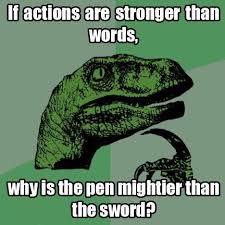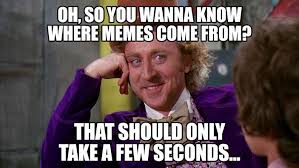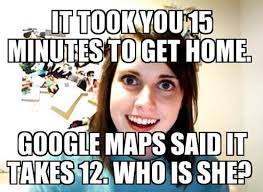Should you start adding memes into your social strategy?
- Liz Achanta

- Oct 21, 2024
- 7 min read
I remember the first time a 'meme' became a thing: I was just starting my freshman year of college, and people starting posting images like the below into my news feed:
People started taking the above images, editing them to reflect the sore 'truths' about our dorms, and publishing them on their doors. It was hilarious, and it was unhinged.
I don't have to tell you how memes evolved from here. If your feed is anything like mine, every third post you see is a meme about something happening in life. Or, you have a relationship with someone on Instagram where your entire message feed is just memes and funny videos. Memes have become an integral part of our social culture, and brings a new meaning to the phrase "a picture is worth a thousand words." Memes enable us to share more than a picture and a phrase - we can send our exact emotions and feelings, through the form of humour.
I just participated in a conference at the beginning of the month that was hosted by Manychat, one of the largest cloud-based social automation platforms. They had a variety of speakers present, like Corporate Natalie, and their Key Note Speaker, Trevor Noah. They had one session in particular that caught my interest, titled Instagram's Algorithm Explained with Memes. The individual leading the session was Ricky Sans, Instagram's Head of Memes (this being an available job is news to me, too). I loved this session so much I watched it again, and now I'm doing my own research and writing a blog article about it.
Memes, which are often humorous, shareable images or videos, have become a dominant form of digital expression, offering marketers a powerful tool to connect with audiences on an emotional and relatable level. But is incorporating memes into a business's social strategy a smart move, or are there potential pitfalls to be wary of? In this article, we'll explore the pros and cons of meme usage in social strategy, and using my very lose form of 'research,' decide if memes are worth investing your time into.
Why Memes Work for Social Media Marketing
Memes are unique compared to traditional social tiles or posts because they thrive on relatability and rapid dissemination. At their core, memes are shared cultural touchpoints—people love them because they reflect something familiar, whether it's a joke, an experience, or a social commentary. For reference, in 2021 the statistic was that one million memes were shared, daily (no updated research on this has been done). This ability to tap into shared cultural moments makes memes an ideal medium for businesses aiming to connect with their audience on a more personal level.
Virality Potential: Memes are designed to be shared, often leading to a snowball effect where a post can quickly gain traction, reaching far beyond a business's usual audience. If a meme resonates with your followers, it's likely to be reshared across their networks, creating exponential visibility. This ability to go viral with minimal investment is appealing to businesses looking for high-impact, low-cost marketing strategies.
Engagement and Connection: Memes often invite interaction—whether that's in the form of a 'like,' a comment, or a share. They foster a sense of community by creating inside jokes or references that only a particular group understands. When businesses successfully leverage memes, they tap into that shared cultural currency, making their brand seem more personable and approachable.
Low-Cost Content: Creating a meme usually requires fewer resources than more polished marketing materials like videos or infographics. Businesses can leverage existing templates, modify current viral memes, or even make light-hearted, brand-centric memes in-house. The informality of memes allows brands to be experimental without the pressure of maintaining high production quality.
Why Memes Can Be Tricky for Brands
However, incorporating memes into your social strategy isn’t without its challenges. Memes are often based on current trends and can lose relevance quickly, meaning businesses need to act fast and stay up-to-date with the ever-changing social landscape.
Short Shelf Life: A meme that’s popular today could be outdated tomorrow. The rapid pace of meme trends means that businesses have to be agile and willing to take risks. If a brand latches onto a meme too late, it could be perceived as out-of-touch, which might harm its reputation rather than enhance it.
Potential for Misinterpretation: Humor is subjective, and a meme that some people find hilarious might fall flat—or even offend others. Businesses need to be mindful of their audience’s sensitivities. While memes are inherently playful, a poorly chosen meme could lead to backlash, especially if it appears tone-deaf or irrelevant.
Brand Consistency: Not all brands are suited for meme culture. If a company prides itself on professionalism and formality (like POTUS, and you can take this as a serious or humorous suggestion), memes may clash with its overall brand voice. Businesses should consider whether or not meme usage aligns with their established brand identity before diving into meme marketing.
Is It Legal to Use Memes in Business Marketing?
One of the main concerns businesses have about using memes is whether it’s legally acceptable. Memes are often based on copyrighted material—whether it’s an image, video, or audio clip—so businesses need to tread carefully when incorporating them into their social strategy. Fortunately, in the United States, there are legal precedents and protections that can make meme usage permissible in certain contexts.
Specifically, meme's are categorized under the 'Fair Use' exception of Copyright Law (Section 107) - meaning the content is OK to use without permission if it is transformed into commentary, parody, or other transformative work. That's why SNL and other businesses can get away with their work.
However, the specifics of fair use can be a gray area, and not all meme usage is automatically protected. Courts will usually consider:
The purpose and character of the use, particularly whether it is commercial or non-commercial.
Whether the use is transformative, meaning it adds new expression or meaning to the original content.
The amount of the original work used.
The effect of the use on the market value of the original work.
For businesses, this means that using a meme in a way that clearly transforms the original content (such as adding new meaning or context) is more likely to be protected by fair use. But if a business simply reuses an image without adding anything new, they could potentially be infringing on copyright law.
Successful Use Cases of Businesses Going Viral with Memes
Several businesses have successfully harnessed the power of memes to increase brand awareness and engagement. Here are a few examples of brands that hit the jackpot by incorporating memes into their social media strategy:

Netflix: Known for its casual and often humorous social media presence, Netflix frequently uses memes to engage with its audience. One of its most viral examples was the "Bird Box" meme trend, where Netflix encouraged viewers to share humorous takes on the popular movie. The memes, which played off the film's concept of blindfolded survival, quickly went viral and kept the conversation going about the movie long after its release.
Wendy’s: Wendy’s social media presence is a masterclass in meme usage. The fast-food chain is known for roasting its competitors and customers in a way that often goes viral. Wendy’s takes popular memes and injects its brand voice, engaging users in a fun, irreverent way that stays consistent with its established brand personality.
Ryanair: The low-cost airline has become famous on TikTok for its use of trending sounds and memes. Ryanair consistently taps into current TikTok trends, using humor and self-deprecation to connect with younger audiences. This has resulted in high engagement, with their TikTok videos often going viral, making the brand a recognizable force on the platform.

Denny’s: Another brand that’s nailed meme culture is Denny’s, whose Twitter account has gained attention for its surreal humor and meme-heavy content. Their use of absurd memes, often referencing pancakes or other diner staples, has turned what could be a mundane brand into a social media favorite among younger demographics.
The Case for Small Businesses: My Research
Back to the conference I mentioned earlier, Ricky Sans made the claim that businesses who posted memes regularly for at least a month saw dramatic increase in their followers on Instagram. I was curious if this was actually the case, or if this was only a case for those businesses that did their 'partnership' work with Instagram directly.
For my professional work, I run an Instagram that targets the LGBTQIA+ community, and we post a meme once per month. I went back the last twelve months and ran the engagement analytics of meme-based posts versus non-meme-based posts. The results? Our memes had 4% greater engagement than our regular posts. While this isn't exactly ground-breaking, it does show that this is wanted content, and that we're moving in the right direction.
For additional research, I looked up a local business in my town who occasionally posts memes (a library, specifically). This library has 1,200 followers, and posts daily. In reference to memes, the library posts roughly once per week - and the engagement rate for their memes is actually lower than their other posts, with library events averaging a higher engagement rate.
I know what you're thinking, and I absolutely agree - more research needs to be done on this. If I was conducting an actual study, I would need more subjects, and track engagement and followers daily. I'd love to conduct more research on this topic, so if you have an account you'd like me to monitor, please send their details my way.
Should Your Business Use Memes?
While memes can be an incredibly effective tool in a business’s social strategy, they aren't a one-size-fits-all solution. The decision to use memes should depend on your brand identity, target audience, and social media goals. Here are a few questions to ask before jumping into meme culture:
Does meme culture align with your brand's voice and values?
Is your target audience likely to appreciate and engage with memes?
Do you have the resources to keep up with the fast-paced nature of meme trends?
Are you prepared for the risks involved, such as potential misinterpretation or backlash?
Incorporating memes into a social strategy can help businesses tap into viral trends, engage with audiences in new ways, and add a human element to their brand. When done right, memes can lead to massive reach and engagement, often at little cost. However, businesses should approach meme usage thoughtfully, considering both the potential rewards and risks. As long as brands stay authentic, mindful of legal considerations, and in tune with their audience, memes can become a valuable asset in the modern marketer’s toolkit.






